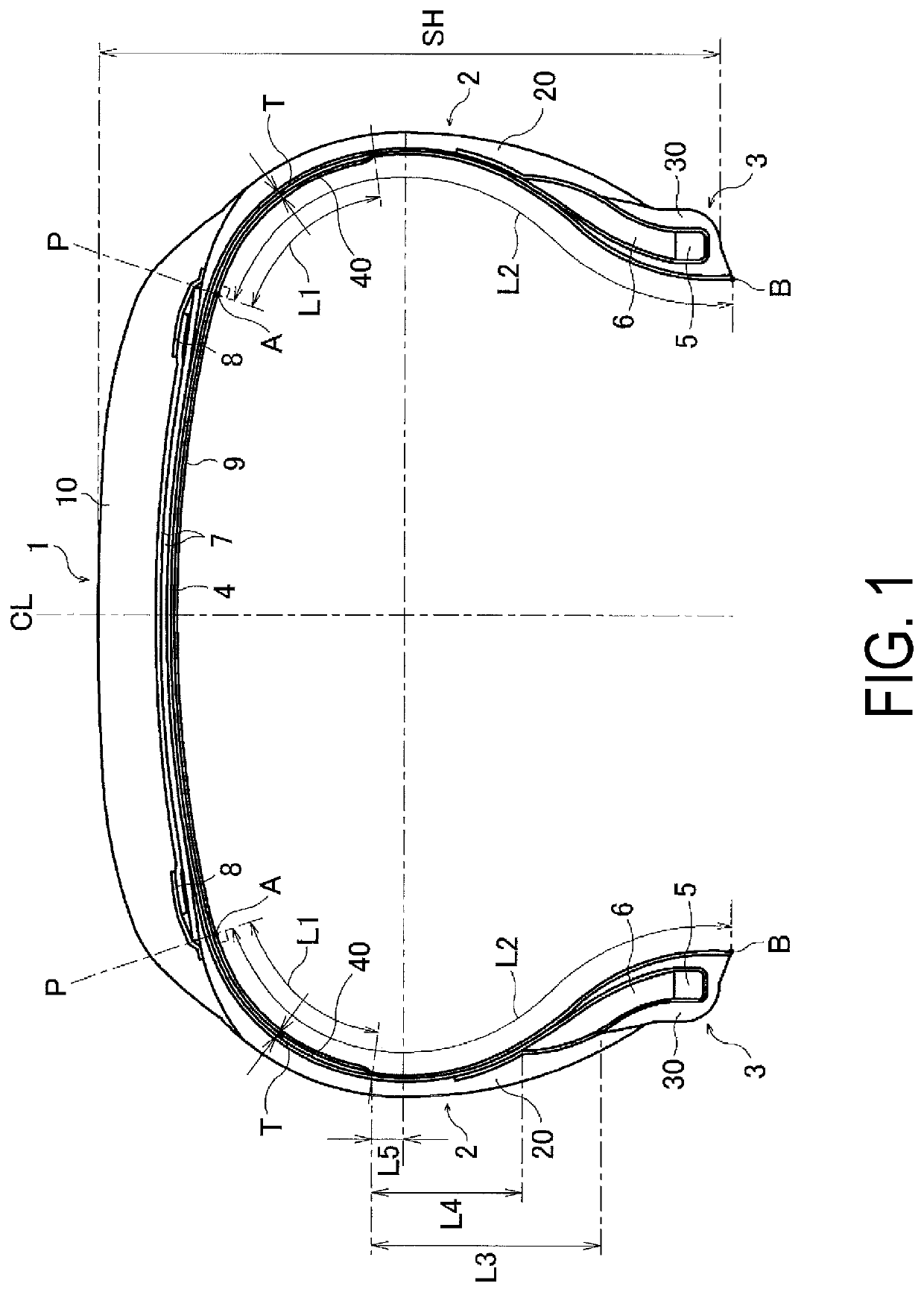Pneumatic Tire
a pneumatic tire and tire body technology, applied in the field of pneumatic tires, can solve the problems of preventing affecting the manufacturability of tires, and difficult to maintain air permeation, so as to reduce tire weight, prevent performance and steering stability, and reduce tire weight. the effect of sufficient weigh
- Summary
- Abstract
- Description
- Claims
- Application Information
AI Technical Summary
Benefits of technology
Problems solved by technology
Method used
Image
Examples
examples
[0025]25 types of pneumatic tires including Conventional Example 1, Comparative Examples 1 to 4, and Examples 1 to 20 were manufactured. Each of the tires had a tire size of 195 / 65R15 and a basic structure illustrated in FIG. 1, and was set to have the following conditions as shown in Table 1 or 2: a structure of a tie rubber layer; a protruding amount L1 of the partial tie rubber layer toward a bead portion with respect to a perpendicular line P, which is drawn from an outermost end portion of the belt layer in the tire lateral direction toward an innerliner layer; a periphery length L2 along a tire inner surface from an intersection point A of the perpendicular line P and a tire inner surface to a tip point B of a bead toe; a ratio of a separation distance L3 between the end portion of the partial tie rubber layer and an end portion of a rim cushion rubber layer on an outer side in the tire radial direction with respect to a tire cross-sectional height SH (L3 / SH); a ratio of a sep...
PUM
 Login to View More
Login to View More Abstract
Description
Claims
Application Information
 Login to View More
Login to View More - R&D
- Intellectual Property
- Life Sciences
- Materials
- Tech Scout
- Unparalleled Data Quality
- Higher Quality Content
- 60% Fewer Hallucinations
Browse by: Latest US Patents, China's latest patents, Technical Efficacy Thesaurus, Application Domain, Technology Topic, Popular Technical Reports.
© 2025 PatSnap. All rights reserved.Legal|Privacy policy|Modern Slavery Act Transparency Statement|Sitemap|About US| Contact US: help@patsnap.com

